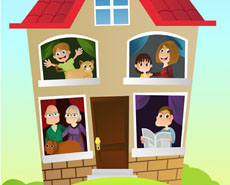A marked increase in transgenerational living arrangements has sparked in a shift in the housing industry that could spell success for builders that are willing to explore a change in direction. New Girl, Modern Family, Two and a Half Men, Reba, The Golden Girls. What do they have in common? For decades, media has used the stresses, obstacles, and precarious balances of multigenerational housing as the fuel for sitcoms. Simultaneously, those shows depict real-life scenarios that drive members of different generations and interests together. These scenarios aren’t tools of fiction. Rather, they are reflections of a growing trend in America that is changing the way that builders are addressing the future of real estate. Multigenerational housing has been on the rise and isn’t showing signs of slowing down. The Census Bureau reports a 15% rise in homes containing three generations or more under one roof between 2008 and 2010. Households containing one or more adult who is not a partner or student increased by 21.8% in 2011. Young adults move back in with parents, a parent may move in their children, new immigrants find housing with family—the scenarios vary but one condition remains the same. More people living under one roof is changing the way that builders approach future housing projects. A growing class of unlikely homeowners has also emerged in recent years. An article in Time Healthland explored the increase of non-familial groups that have united to form households. Common combinations include students groups and pairs of young couples. These arrangements save residents money while allowing them to claim larger properties in more desirable areas. The ideal property for this new wave of tenants is a single family structure with features that accommodate—or can be altered to accommodate—large families. Annual predictions estimate a...

